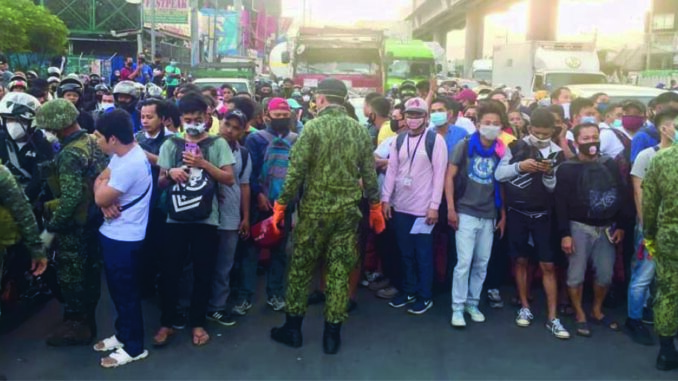
With a Luzon-wide lockdown, some 48 million Filipinos on the Philippines’ main island have to return to basics. They retreated to their ultimate defense castles – their homes. It happens that the household or family is also the basic unit of society and the basic economic unit.
A lockdown in Luzon, meaning a freeze in almost every economic activity in the archipelago’s richest and most productive island, is a lockdown or an insidious assault on the economy.
You freeze the population, you freeze economic activity or consumption, you stop the economy’s gears.
With a population of 109 million, there are more than 23 million households in the Philippines; 10 million of that are in Luzon, including 2.8 million in Metro Manila, the national capital.
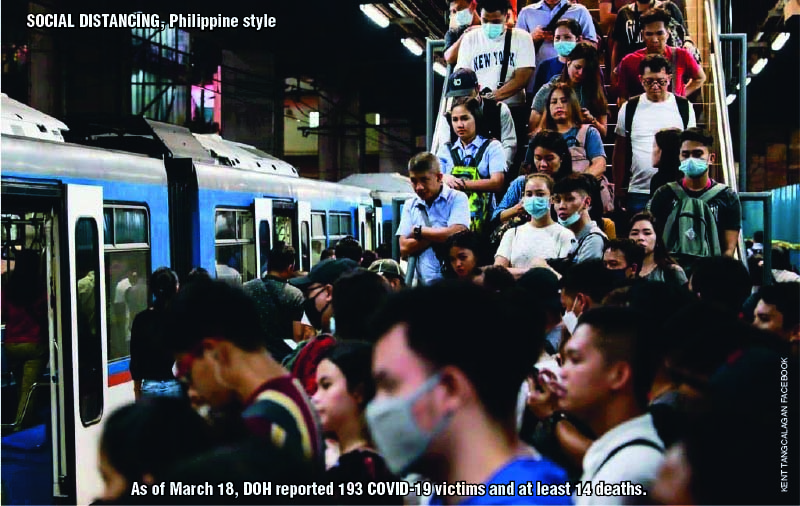
Luzon contributes 73% to GDP
The contribution of Luzon to the national economy is tremendous—73 of every P100 of goods and services produced nationwide. The economy has two kinds of consumers – households and the government.
The economy is run by consumption—74% by private consumption, and 13% by government. If people or households, counted as private consumption, do not spend, it’s like stopping 74% of the economy. Government’s share of consumption, 13%, cannot make up for the slack.
One reason for the strength of private consumption is the huge money sent by some 12 million Filipino expats who work or stay abroad.
In 2019, remittances were a record $33.47 billion or P1.698 trillion. Much of that money is stranded, meaning it is not funneled to something productive like capital goods or machinery, or factories, or infrastructure. Most goes to consumption – of consumer goods, appliances, cars, homes, and for simply shopping, eating, and entertainment. That is what made Henry Sy Sr. and Manny Villar the richest Filipinos.
If you lock people up in their homes, in effect you hinder them from consuming goods and services.
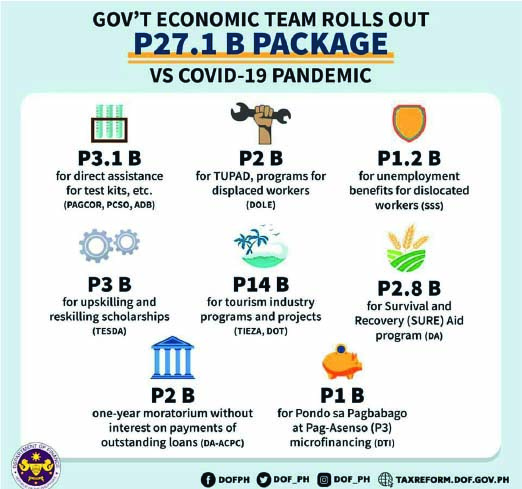
GDP is P18 trillion
The economy produces P18 trillion worth of goods and services a year. Of that, a whopping 73% is produced by Luzon alone, or P13.21 trillion. Divide that by 365, and you get Luzon consuming/producing P36.2 billion worth of goods and services—daily. Freeze that for one month or 30 days times P36.2 billion, and you get an economic impact of P1.08 trillion in one month.
Assuming you freeze only half of the P1 trillion for 30 days, you still get a gargantuan figure—P543 billion. Imagine the impact on wages, jobs, economic dislocation, and social inequity if that amount were withdrawn from the economy for one month. You would have mass unrest if the lockdown went beyond reasonable limits. Per reports, at this writing, in the Philippines, 140 have fallen ill to COVID-19, the disease caused by the coronavirus series 2019. Of that, 12 have died.
75,000 cases?
Interior Secretary Eduardo Año warns that without a lockdown, COVID-19 victims could reach 75,000. I find that an outlandish figure. Even if you use the so-called exponential math.

At this writing (March 17), the global figure, per Johns Hopkins’ Center for Systems Science and Engineering is198,152—two months and almost three weeks after coronavirus surfaced in China in late December 2019. Some 7,954 have died –3,122 in Hubei, China; 2,503 in Italy; 988 in Iran, 533 in Spain, 148 in France; 84 in South Korea; 71 in UK; 55 in Washington State, US; and 29 in Japan.
Of the 198,152 COVID-19 patients, China has 81,086; Italy 31,506; Iran 16,169; Spain 11,826; Germany 9,360; South Korea 8,413; France 7,695; USA 6,496; Switzerland 2,700; UK 1,960; Netherlands 1,710; Norway 1,471; Austria 1,332; Belgium 1,243; Sweden 1,196; Denmark 1,024; Japan 882; Malaysia 673; and Canada 596.
To reach the level Año has warned about—75,000, the global total of COVID-19 victims would have to reach 98 million. This is because the global tally of COVID-19 patients is 1,300 times that of the Philippines.
Per the experience in Hubei, China, the epicenter of the outbreak, 55,987 of its 67,799 patients have recovered. That’s an 82% recovery rate. Eight of every ten people afflicted recover. So we have no reason to panic — except for seniors like me, or people with hypertension, diabetes, cardiovascular disease, chronic respiratory disease, and cancer. The latter group, a fourth of them would die if attacked by the virus.
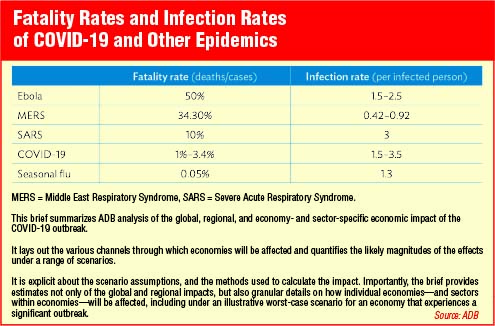
COVID-19 not that deadly
However, overall, compared with previous outbreaks, COVID-19 is not that deadly. Only 1% to 3.8% of patients die from COVID-19. Compare that fatality rate to 10% for SARS, 34% MERS, and 50% Ebola. SARS and MERS are also coronaviruses. Seasonal flu has a kill rate of only 0.05%.
The logic behind the Luzon lockdown is to avoid the spread of coronavirus which is very aggressive in growing, exponentially, as they say. And to minimize if not avoid deaths.
China has a population of 1.4 billion. Only 81,051 fell victim to COVID-19, with over 3,200 deaths. Divide 81,051 by 1.4 billion Chinese people, you get an affliction rate of 0.0000578. Multiply that affliction rate of 0.0000578 by 109 million (the Philippine population), you get 6,300. Use the WHO fatality ratio of 3.4%, you get 214 Filipinos going to die from COVID-19.
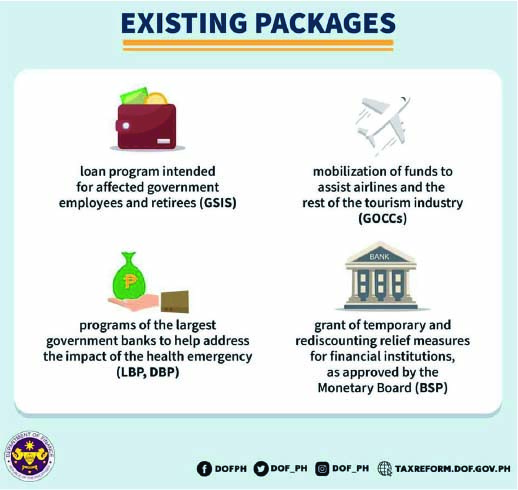
P2.53B loss to save one life
The 214 is the number of Filipinos President Duterte is trying to save by locking down and freezing economic activity in Luzon. Divide the economic cost of P543 billion, and you get P2.53 billion worth of life for each of those 214 going to die.
Now, the average lifespan of the Filipino is 69 years. Of those 69 years, he/she is economically active for 54 years, from age 15 to age 69. The Filipino has a per capita income of P200,000 a year. Multiply that by 54 years. You get P10.8 million. This is what I would call the value of the life of one Filipino – P10.8 million.
Divide P2.53 billion by P10.8 million, you get 234.25. The government, it seems, values each death from COVID-19 at 234 times a Filipino’s useful economic life. Now, that’s malasakit or empathy of the highest order. That’s Duterte. And I admire him for that.
— Tony Lopez
BSP advice: Let’s make isolation measure in Luzon work
By Benjamin Diokno Governor, Bangko Sentral ng Pilipinas
What’s the impact of the Luzon-wide community isolation on the economy?
I don’t know yet. But it will definitely have an impact.
Note that this action is meant to be a temporary, 30 days at most, and it will straddle two quarters — two weeks out of 13 weeks in Q1 and another weeks in Q2. It is designed to flatten the incidence curve.

I think the focus should be on how to make the Luzon-wide community isolation measure work. If it succeeds, the adverse impact will be minimal and we can expect a V-shape recovery; if it fail, the adverse impact can be large and protracted, and the recovery can be an elongated U.
The community isolation measure takes the nature of a ‘public good’. My behavior affects my fellowmen, what they do affects mine. If everyone embrace community isolation and cooperate, it will not only benefit oneself, one’s family, but it will also benefit the whole community and society.
Moral of the story: let’s cooperate, let’s hope the community isolation works. If you have no business going out of your home, stay home.
